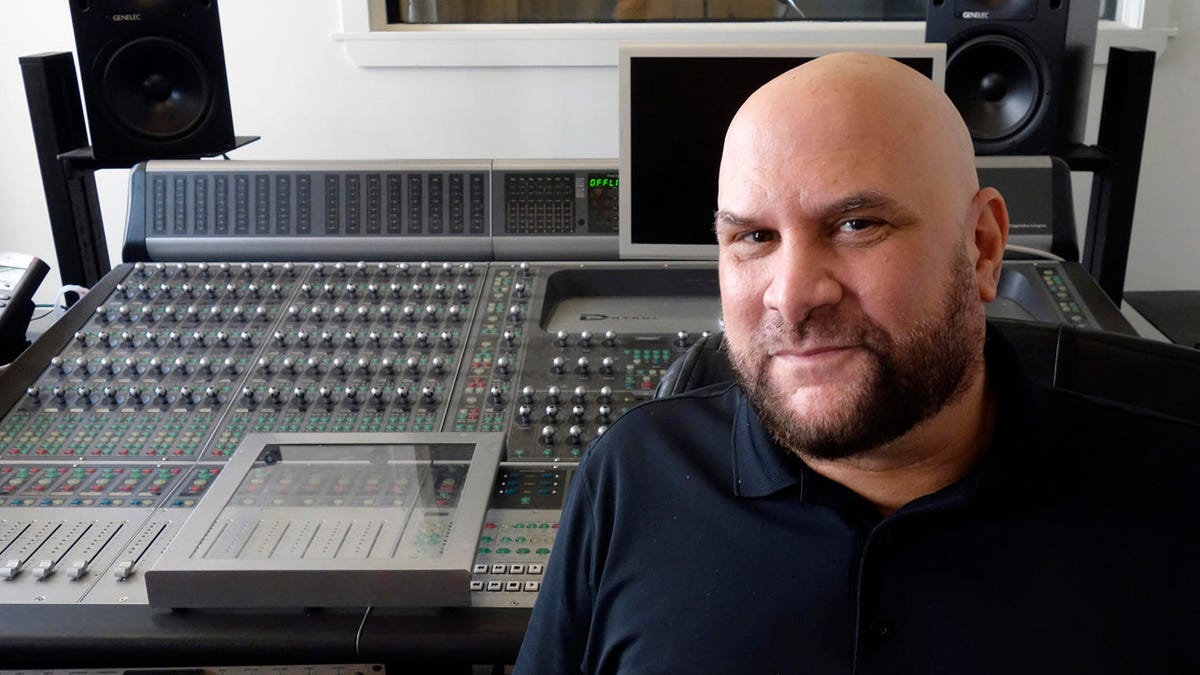Mixing John Lennon's Imagine: We meet engineer Rob Stevens
It's a dream job for an engineer. Rob Stevens tells us how he brings out the best in John Lennon's solo work.

Engineer Rob Stevens.
For Rob Stevens, the John Lennon connection dates back to when he mixed Lennon's Live in New York City and Menlove Avenue albums, six years after the Beatle's death, in 1986. Over the years, Stevens has worked with Lennon's widow Yoko Ono on many of the reissues and compilations of Lennon's solo work.
I first met Stevens when I was invited to hear a preview of the new John Lennon Imagine Ultimate Collection, which includes his Raw Studio Mixes, which let us hear the music as it was played in the studio, mixed in an almost diametrically opposite way to the final album.
The Raw Studio Mixes are the ones without added reverberation, orchestral strings and other production bits and pieces. For a Beatles fan like me, this was a really big deal. With the high-resolution 24-bit/96 kHz Raw Studio Mixes I felt like I was in the room with Lennon and his band, so the music felt more alive and vital than ever before. Stevens has access to the original analog master tapes to produce the best quality digital transfers for reissues and compilations.
There's some confusion among audiophiles about what constitutes a "master." First thing, Stevens says, there's a lot more than one master. Along the way of making a recording there's the studio multitrack master, the mix down master of a song, mix outtakes and masters for LP, CD, high-resolution files, Mastered for iTunes files and more. But Stevens summed it up this way: "The master is what people wind up hearing."
Much of what Stevens (or any reissue engineer) works on involves judgement calls about the way the music should sound. He gave the example that for some of the outtakes of the Rock and Roll album for the Lennon Anthology box set he decided to use the 16- not 24-bit master, because the 16-bit lower resolution master's grittiness suited the music better. There are times where he'll transfer some parts of a song -- for example the drums -- of a digital master over to analog tape because he likes what the conversion to analog adds to the drums' sound.
It's not always about what theoretically sounds better, it's what sounds right to Stevens. He was emphatic about that. At one point in the interview when I suggested he was trying to make the music sound as good as possible, Stevens corrected me and said, "No, I'm trying to make it sound right."
Stevens gave the following example of the difference between good and right: While working on one of the John Lennon Anthology tracks, he did a quick mix just to get something down, and then when he had more time he worked on and perfected the same track for seven hours. When he played both versions for Yoko Ono she without hesitation picked the quick mix, and after Stevens took a week's break and listened again, he realized that although the version he put all that time into may have been technically better for sound, the quick mix felt right. That's the difference between sounding good and sounding right.
In the end, Stevens always relies on Ono's tastes and instincts for what Lennon's music should sound like. After all, she was in the room when the music was being recorded. Who would know more about how John Lennon wanted his music to sound than Yoko Ono?
The Audiophiliac: High-end audio news and reviews, every weekend.
Reimagining John Lennon's Imagine: The 1971 album loads on remixes, outtakes and more.

